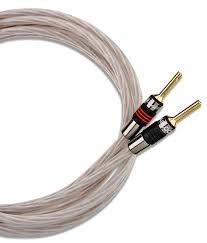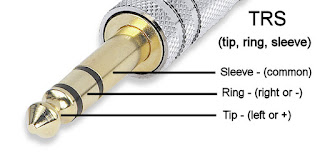Introduction to Recording Studio
Signals and Circuits
Signals and Circuits
by Mark King for Proworkshop.com
If you want to make any audio system function at it's best* then you need to know what is going through the wires.
Electrical signals** represent sound in an audio system, they are the electricity that runs through the wires in an audio system.
But what is it? What are those signals? How do we connect them up?
There are only two types of electricity, AC*** and DC, everything else is a version of one or the other of these. Electricity moves through wires at the speed of light (very fast). Sound moves through air much more slowly than electricity flows through wires.
Audio signals are AC. Alternating-Current reverses direction many times a second as it moves through the wiring of a system. Most electricity found in an audio recording system is AC.
Battery power is DC, Direct-Current flows in one direction only. Power supplies are common uses for DC in an audio system. The 48-volt phantom power which is used to power condenser microphones is an application for DC in an audio recording system.
AC and DC both
- Come in a variety of sizes depending on the application
- Are measured in volts.
AC is the most common electrical current found in an audio recording system (remember, audio signals are AC).
It is important to understand the relative size of audio-signals found in a recording studio. The following is meant as a guide or "Rule of Thumb" (RoT) to help you navigate through all the terminology, there are exceptions to these ranges but these are the most common.
In the following, signals have been grouped together into five size-ranges to help identify each one and make it easier to understand their size relative to each other:
- Large
- Medium
- Small
- Smaller
- Smallest
These are the largest signals typically found in an audio recording system. Modern powered speaker-systems have eliminated a lot of external speaker wiring so speaker wiring and signal-level is an unknown to many young recordists. The most common speaker-level usage found in a modern recording studio might be connecting the output of a guitar amplifier to a guitar speaker.
MEDIUM = LINE-LEVEL SIGNALS
Line-level are the signals that you encounter most often interconnecting audio components and signal processors. Line-level signals can be small, less than 1-volt or they can be several volts. dBu is a popular system of measuring line level signals.
8.691 volts = +21 dBu, this is the maximum input line-level signal for a lot of popular sound and recording equipment.
SMALL = ACTIVE-INSTRUMENT-LEVEL SIGNALS
This level of signal is what you might expect from the audio output of a synthesizer, keyboard or possibly an active-bass guitar or any instrument that uses a battery to power the circuits contained inside.
SMALLER = PASSIVE-INSTRUMENT-LEVEL SIGNALS
This is the signal level you can expect to come out of a passive electric guitar such as a Fender Stratocaster or Gibson Les Paul. The humbucking pickups on a Les Paul technically generate a larger level than the single coil pickups on the Stratocaster but both of them are lumped together into this category of level.
SMALLEST = MICROPHONES
Microphones generate very small signals so they require a lot of amplification to get them up to Line-Level for processing and recording. For this reason microphone cables are always constructed with shielded cable.
REVIEW
Now we know there are two types of electricity, AC and DC and we have some idea about the relative sizes of these signals as they're found and applied in a sound recording studio.
TWO TYPES OF CABLE CONSTRUCTION
SHIELDED
Most audio signal interconnections use some form of shielded-wire, guitar cords are shielded, so are microphone cables and patchbay cords.
 |
| One conductor surrounds the other in this example of two-conductor, shielded-cable for unbalanced connection |
UNSHIELDED
One of the most common unshielded wire applications is the amplifier-to-speaker connection.
Use thicker unshielded cables for connecting your guitar amp to your guitar speaker.
 |
| Unshielded, unbalanced wire for speaker connection Two-conductors running in parallel |
A TALE OF TWO CIRCUITS
UNBALANCED = two electrical-conductors connecting the audio signal
Today one of the most commonly found unbalanced connection's is the electric guitar cord.
Guitar cables use shielded-cable to complete a two-conductor circuit, the outer shield is one conductor and it surrounds the second inner conductor. The photo below is an unbalanced-shielded type of wire often used for connections inside electric guitars. The outer shield conductor is a braided style of construction. Black cloth isolates and insulates the inner electrical conductor from the outer conductor.
 |
| Unbalanced cable, inner conductor on left, black insulation in the middle and braided-shield surrounding it |
Another use for unbalanced wiring is speaker cables. Speaker cables are typically much thicker wire because the size of the signals they must carry are the largest normally encountered in a studio.
Unbalanced speaker connections typically do not use shielded wire, in fact some amplifiers may fail if shielded cable is used for the connection.
Inexpensive guitar cables are often constructed using very small conductors which are cheaper to produce.
RoT: As a Rule-of-Thumb it is not advisable to use a shielded cable for a speaker connection.
Guitar instrument-cables look very similar to guitar speaker-cables and confusingly both use the exact same style of connector, do not treat them as interchangeable or you can damage your amp!
The smallest wire recommended for any speaker connection is 18-gauge for short runs (up to 10 feet) of 150 watts or less. You can always use larger wire but smaller is bad, you've been warned!
BALANCED LINE = A balanced audio circuit uses three-electrical conductors constructed so that one conductor forms a shield around the other two conductors. The AC audio signal flows through the two inner conductors (red and black in photo below) and the outer shield conductor completely surrounds the inner two-conductors, shielding them from interference.
 |
| Heavy gauge monitor speaker cable example, not shielded, unbalanced Banana plugs used for high power connection |
 |
| Guitar amp speaker cable example, not shielded, unbalanced looks just like a guitar cord |
Unbalanced speaker connections typically do not use shielded wire, in fact some amplifiers may fail if shielded cable is used for the connection.
Inexpensive guitar cables are often constructed using very small conductors which are cheaper to produce.
RoT: As a Rule-of-Thumb it is not advisable to use a shielded cable for a speaker connection.
Guitar instrument-cables look very similar to guitar speaker-cables and confusingly both use the exact same style of connector, do not treat them as interchangeable or you can damage your amp!
The smallest wire recommended for any speaker connection is 18-gauge for short runs (up to 10 feet) of 150 watts or less. You can always use larger wire but smaller is bad, you've been warned!
BALANCED LINE = A balanced audio circuit uses three-electrical conductors constructed so that one conductor forms a shield around the other two conductors. The AC audio signal flows through the two inner conductors (red and black in photo below) and the outer shield conductor completely surrounds the inner two-conductors, shielding them from interference.
 |
| Shielded-pair wire used for making balanced line-level connections Three electrical conductors total |
In the above photo the shield is provided by a wrap of aluminum foil which is in direct contact with the little silver colored conductor called a "drain wire". It is not possible to solder to the foil shield so the drain wire is provided for making connections at either end of the cable, the drain would be soldered to the sleeve-common in a TRS plug, the red and black would be soldered to the tip and ring.
WIRE TYPE BY SIGNAL SIZE AND APPLICATION
REVIEW
Two kinds of electricity, AC and DC
Audio-signals are electricity, of the Alternating-Current type, abbreviated simply as AC
Phantom power is electricity, it is Direct-Current, abbreviated as DC
AC and DC are measured in Volts
Various sizes of audio AC signals
Shielded wire = one conductor surrounds other(s)
Unshielded = all conductors in parallel with no outer shield
Unbalanced = two conductors (may be shielded or unshielded depending on application)
Balanced = three conductors (typically a shielded cable)
CONCLUSION
Hopefully knowing about signal level, shielded and unshielded wire and balanced vs unbalanced connections will help you achieve success in connecting up your sound recording studio.
Good luck and good music to all!
*Best Sound = accurate frequency response with minimum background noise
** Want more information about "Signals"? Here is a link to a Wiki article explaining in much more detail. SIGNALS on Wiki
***AC power is what comes out of the wall socket powering your sound and recording equipment.
WIRE TYPE BY SIGNAL SIZE AND APPLICATION
- Largest = speaker connections, wire = unshielded, unbalanced
- Medium = line-level connections, wire = shielded, balanced or unbalanced (depending on equipment connections provided)
- Small = instrument level, wire = shielded, unbalanced
- Smaller = passive instrument level, wire = shielded, unbalanced
- Smallest = microphones, wire = shielded, balanced
REVIEW
Two kinds of electricity, AC and DC
Audio-signals are electricity, of the Alternating-Current type, abbreviated simply as AC
Phantom power is electricity, it is Direct-Current, abbreviated as DC
AC and DC are measured in Volts
Various sizes of audio AC signals
- Large = speaker level, requires larger wire (normally unbalanced, unshielded)
- Medium = line-level, signal processing (balanced or unbalanced, shielded)
- Small = active instrument or keyboard output level (unbalanced, shielded)
- Smaller = passive instrument (unbalanced, shielded)
- Smallest = microphones (usually balanced, may be unbalanced, shielded)
Shielded wire = one conductor surrounds other(s)
Unshielded = all conductors in parallel with no outer shield
Unbalanced = two conductors (may be shielded or unshielded depending on application)
Balanced = three conductors (typically a shielded cable)
CONCLUSION
Hopefully knowing about signal level, shielded and unshielded wire and balanced vs unbalanced connections will help you achieve success in connecting up your sound recording studio.
Good luck and good music to all!
*Best Sound = accurate frequency response with minimum background noise
** Want more information about "Signals"? Here is a link to a Wiki article explaining in much more detail. SIGNALS on Wiki
***AC power is what comes out of the wall socket powering your sound and recording equipment.
In the USA it's 120 volts and it can kill you dead.
We won't be considering or discussing AC wall current in this article.
Connect the power cords for your equipment according to the manufacturer's guidelines.
ADDITIONAL REFERENCE INFORMATION
For a detailed comparison of Volts, dBu and VU see this Cranesong pdf
Another comparison of signal levels: dB, dBu, dBV
Because microphones put out such tiny signal levels they are often specified in millivolts. The table above provides a sort of measuring-stick for comparing signals of varying levels or signals that used different standards of measurement.

